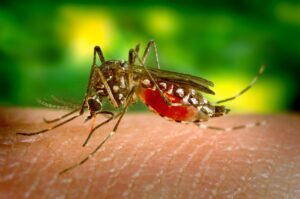How to Educate Kids about Good and Bad Touch?

By Neucrad Health news desk December 2, 2019
A few months ago, a small cheerful girl who has just started attending school, all of the sudden complaints of abdominal pain and refrained from going to school from the next day. Her parents became horrified when on further analysis, they found out that an employee of that school has misbehaved with her, and it had led to her detachment from school. Her parents immediately took her to a doctor for further investigations, and complaint about the incident to the school authority.
Now, this is not a solo incident in our society. These days, the moment you switch on the news channel on TV or start browsing through social media sites, you get stressed out reading about numerous accounts of sexual assaults on victims of all ages. The assaulters do not even spare children in pre-schools. It has become essential for parents to brief their kids about good and bad touches before enrolling them for pre-schools. It would help them detect any instance of unfair conduct from outsiders and protect them from future exploitations.
What are the different types of Touches?
Feel free to educate your children about the various types of ‘contacts’ which they might encounter after stepping to the external world. In general, ‘touching’ is a form of communication. It can either make you feel good or uncomfortable. There can be several ways of toughing others, like holding and shaking hands, patting the back, blessing, touching feet or ‘pranam’ (very common in the Indian culture), kissing on forehead, and even beating. Based on the feeling aroused on the receiver, ‘touches’ have been categorised under two broad heads- ‘good touch’ and ‘bad touch’. Now, let us talk about these types of conducts in detail.
Good Touch:
Good touches make you feel good, protected and safe. It can be in the form of a warm handshake from a friend or a pat at the back from teachers and other elders. It helps children to bond with others and create a sense of harmony. Children sharing food among each other, or a teacher kissing on the forehead for some achievement or good conducts are also examples of good touches. However, at this point, it is worth notifying kids that their body solely belongs to them. At every instance, they have the right to object any type of touches from friends or elders.
Bad Touch
Bad touches, on the contrary, makes you feel humiliated and uncomfortable. You can experience bad touches if any outsider beats you, pulls your hair, kicks you, or touches your private parts like chest, buttocks and genitals. It is also essential to explain kids the meaning of private organs of the body and make them realise that only they can touch those areas while practising hygiene. Make it very clear that even parents should not touch the private parts when children become old enough in taking care of their bodies. While explaining the meaning of bad touches, pay attention that kids do not become unnecessarily conscious or fearful about others.
What children should do when they experience bad touches?
While explaining bad touches, also make it a point of guiding children about the course of action they should undertake when they experience unwanted conducts. Try to maintain a friendly relationship with kids so that they can confide in you all their day-day-experiences. It is essential to object to any form of bad touches and shout out loud so that others, in the vicinity, become aware of the unwanted behaviour by the assaulter. If children experience these unwanted behaviours in a secluded area, they should immediately run away from the abuser and come to a place frequented by the public. Kids should not stay mum; they should notify about their experience to other trustable individuals at school or other public places like their class teacher or caregiver. These unwanted behaviours are abusers ‘mistake’; they should in no way feel guilty about these incidents.
This was a brief account of good and bad touches. Educate your tiny tots about these experiences, so that they can differentiate about the different type of ‘contacts’ and stay protected.








